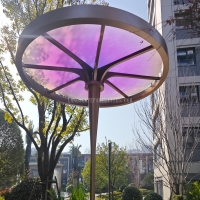Welcome to the website for landscape facilities products and knowledge.
What are the best ways to design landscape tables for use in areas with high static electricity?
Designing landscape tables for areas with high static electricity requires careful consideration of materials, grounding techniques, and structural design to ensure safety and longevity. Here are the best ways to achieve an effective static-resistant landscape table:
1. Use ESD-Safe Materials: Opt for materials like conductive polymers, carbon-fiber composites, or metal alloys that dissipate static electricity. Avoid insulators like standard plastics or untreated wood, which can accumulate charge.
2. Implement Grounding Systems: Integrate grounding wires or rods into the table’s design to channel static electricity safely into the earth. Ensure all conductive components are properly connected to the grounding system.
3. Anti-Static Coatings: Apply anti-static or conductive coatings to surfaces to reduce static buildup. These coatings are particularly useful for tables in dry or high-friction environments.
4. Minimize Friction: Design tables with smooth, rounded edges and avoid materials that generate friction, such as rough textiles or untreated metals, which can exacerbate static issues.
5. Humidity Control: In outdoor settings, consider incorporating moisture-retaining elements like water features or plants to maintain ambient humidity, which helps dissipate static naturally.
By combining these strategies, landscape tables can be both functional and safe in high-static environments, ensuring durability and user safety.
Related search:

Recommendation
Metal frame with gradient color acrylic combined with high-end shading landscape facilities